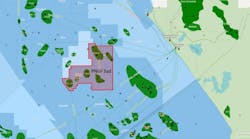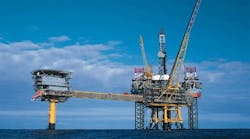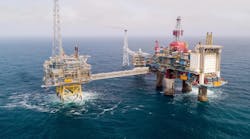Offshore staff
NEWCASTLE-UPON-TYNE, UK – Cost-cutting measures such as adjusting the water temperature used during offshore oil production could help address problems linked to sulfate-reducing bacteria (SRB), according to the UK’s Engineering and Physical Sciences Research Council (EPSRC).
The bacteria ‘breathe’ sulfates but exhale toxic, corrosive hydrogen sulfide (H2S).
EPSRC is funding research into this issue, led by Newcastle University. Also involved are various private sector, public sector, and academic partners from Britain and overseas.
SRB, which evolved billions of years ago, thrive in oxygen-free, watery environments such as those found in offshore oil deposits.
The H2S they produce is a principle cause of reservoir souring, increasing the oil’s sulfur content and so reducing its market value.
Furthermore, H2S is highly toxic, posing a potentially deadly hazard to staff on offshore platforms, while its corrosiveness can damage pipelines and rigs, leading to oil leaks and spills.
The Newcastle-led team has been investigating the common practice of pumping seawater into an oil reservoir to reduce temperatures and make extraction easier, which can pose problems in terms of reservoir souring.
Dr. Casey Hubert of Canada’s University of Calgary, Visiting Professor at Newcastle University, said: “Our results suggest that warming the injected seawater so that the temperatures in a hot reservoir drop down to say 70°C [158°F] rather than 50°C [122°F], could prevent SRB activity without significantly affecting the oil extraction process.”
One technique currently applied to mitigate the impact of SRB in offshore oil reservoirs involves injecting nitrates to stimulate growth of another type of bacteria that ‘out-compete’ SRB for nourishment.
“We’re working on ways to predict more accurately the nitrate dose that will be needed in any particular context, taking precise local conditions into account,” Dr. Hubert said.
“Adjusting the nitrate dose offers ways to better manage corrosion risks associated with reservoir souring and in some cases could cut costs if lower doses could be used. Our aim is to work with industry so that the nitrate souring control technique is understood thoroughly and sees widespread use.”
The team is also exploring whether the presence of heat-loving (‘thermophilic’) bacteria on cold seafloors might be a sign of the presence of oil reservoirs below.
In that case, mapping and tracking the distribution of such bacteria, which might have seeped out of the reservoirs, could provide an alternative way for oil companies of exploring for new reserves, and cut the risk of unsuccessful drilling.
Testing of the idea is now staring off Canada’s Atlantic coast.
07/05/2017




